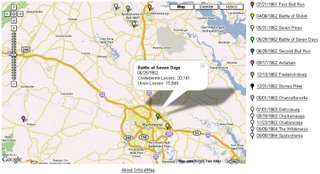This is good news. As an infant, Jessica went into hysterics whenever she felt water on her face. Just as she outgrew that phobia, her hair became long enough to tangle.
Tangles in Jessica's hair were such a large part of our family life that Camille actually began naming them—the tangles—after characters from I Love Lucy. To this day, if Jessica feels a pull over her left parietal lobe, she'll say menacingly, "Watch it, Ethel!"
I've always been short-haired, so I had no experience with snarls. After years of struggling quietly, I finally appealed to Camille for guidance and learned how to remove tangles from Jessica's hair. Since I'll probably forget soon, I record this for posterity.
- Let the child wet her own hair. She will take too long and concoct Gordian knots on her head.
- Help the child shampoo.
- Let the child rinse. Generally I pull out a book and let her play a bit at this point.
- Apply conditioner. I used to think of conditioner as some alchemical potion that gives hair "body" and "luster." Camille taught me it's a simple lubricant, like WD-40 or vegetable oil. Conditioned tangles slide apart easily. Camille suggested that I needed to condition only the hair hanging down Jessica's back, but I take no chances and coat her whole head.
- The child can bathe while the conditioner soaks in.
- Starting at the bottom, brush her hair downward. This means that for the first few strokes of the brush, I fix only the tangles at the bottom of the hair. Once they are cleared out, move up an inch, and repeat. If the child's hair is long enough, you can also grip the middle of it tightly in one hand so that even if tangles exist at the end, the child will not feel the pulling.
- Be careful not to brush too hard against the child's scalp. (I wrongly assumed for months that Jessica was complaining about hair pulls from tangles, when actually I was scraping her scalp with the bristles.)
- Brush her hair under the shower stream until the conditioner is mostly rinsed out.
In short, my answer is chemical warfare: in the battle against tangles, conditioner is my weapon.
